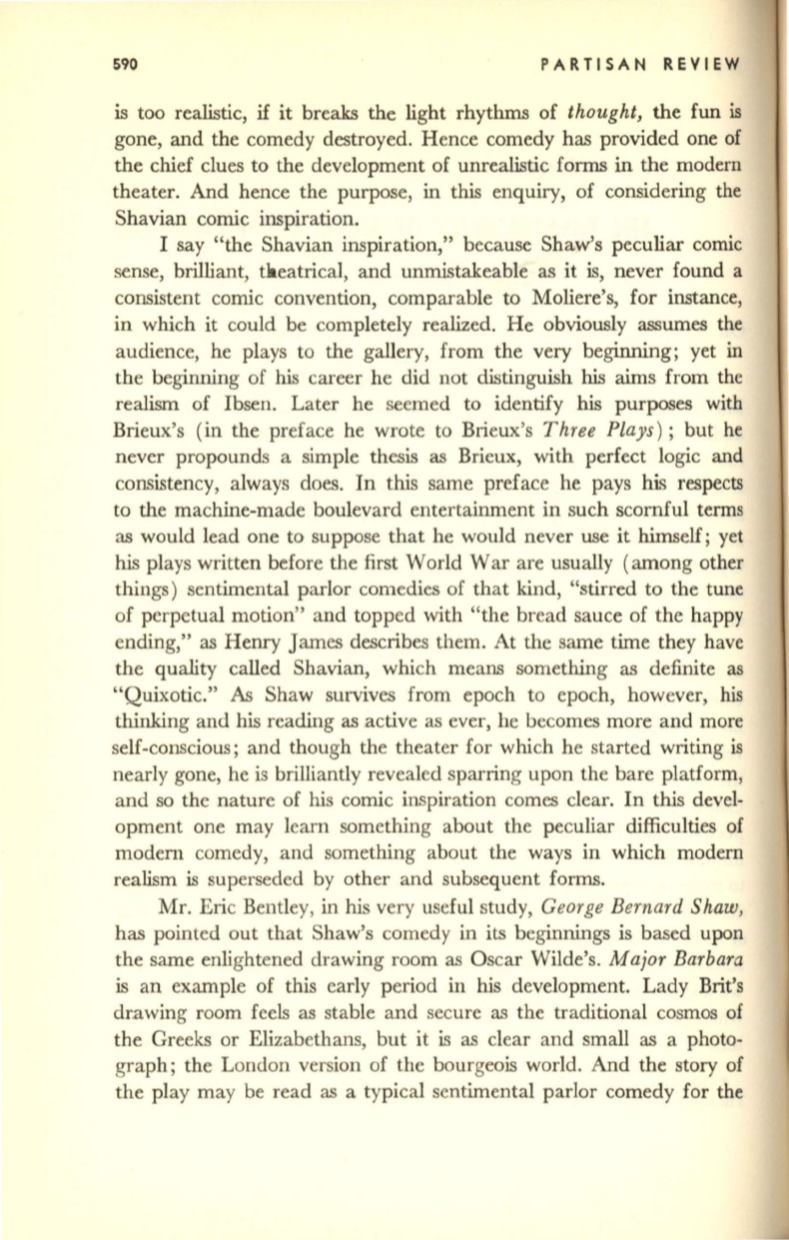
590
PARTISAN REVIEW
is too realistic, if it breaks the light rhythms of
thought,
the fun
is
gone, and the comedy destroyed. Hence comedy has provided one of
the chief clues to the development of unrealistic forms in the modern
theater. And hence the purpose, in this enquiry, of considering the
Shavian comic inspiration.
I say "the Shavian inspiration," because Shaw's peculiar comic
sense, brilliant, tlteatrical, and unmistakeable as it is, never found a
consistent comic convention, comparable to Moliere's, for instance,
in which it could be completely realized. He obviously assumes the
audience, he plays to the gallery, from the very beginning; yet
in
the beginning of his career he did not distinguish
his
aims from the
realism of Ibsen. Later he seemed to identify his purposes with
Brieux's (in the preface he wrote to Brieux's
Three Plays );
but he
never propounds a simple thesis as Brieux, with perfect logic and
consistency, always does. In this same preface he pays his respects
to the machine-made boulevard entertainment in such scornful terms
as would lead one to suppose that he would never use it himself; yet
his
plays written before the first World War are usually (among other
things ) sentimental parlor comedies of that kind, "stirred to the tune
of perpetual motion" and topped with "the bread sauce of the happy
ending," as Henry James describes them. At the same time they have
the quality called Shavian, which means something as definite as
"Quixotic."
As
Shaw survives from epoch to epoch, however, his
thinking and
his
reading as active as ever, he becomes more and more
self-conscious; and though the theater for which he started writing is
nearly gone, he is brilliantly revealed sparring upon the bare platform,
and so the nature of his comic inspiration comes clear. In this devel–
opment one may learn something about the peculiar difficulties of
modem comedy, and something about the ways in which modem
realism is superseded by other and subsequent forms.
Mr. Eric Bentley, in his very useful study,
George Bernard Shaw,
has pointed out that Shaw's comedy
in
its beginnings is based upon
the same enlightened drawing room as Oscar Wilde's.
Major Barbara
is an example of this early period in his development. Lady Brit's
drawing room feels as stable and secure as the traditional cosmos of
the Greeks or Elizabethans, but it is as clear and small as a photo–
graph; the London version of the bourgeois world. And the story of
the play may be read as a typical sentimental parlor comedy for the


